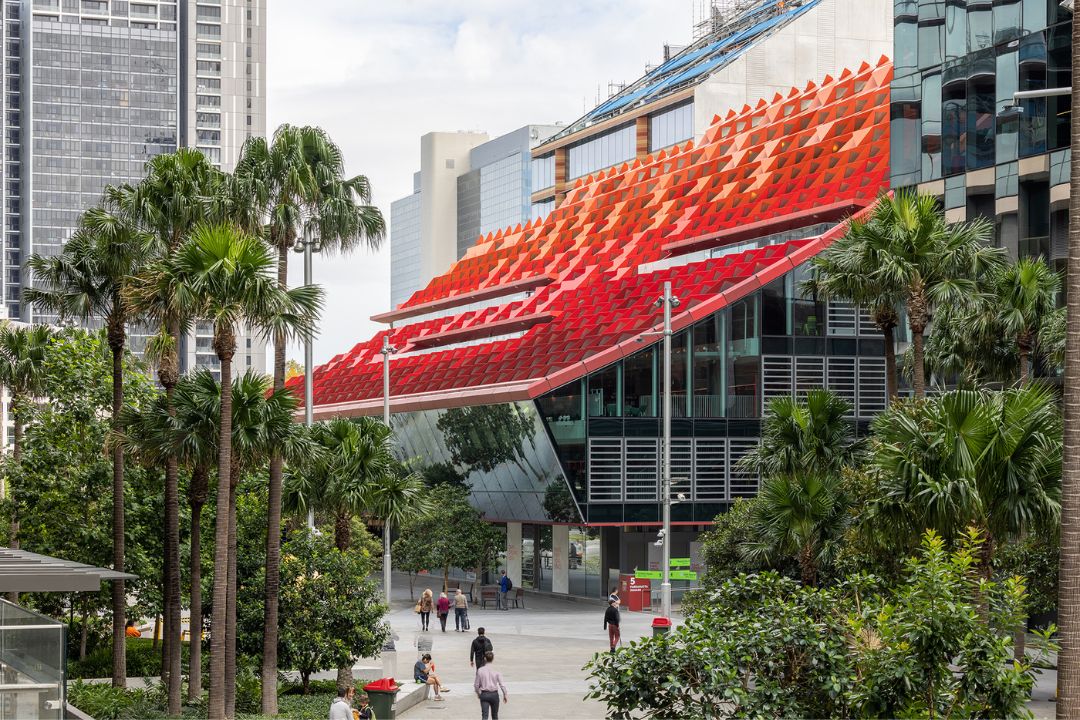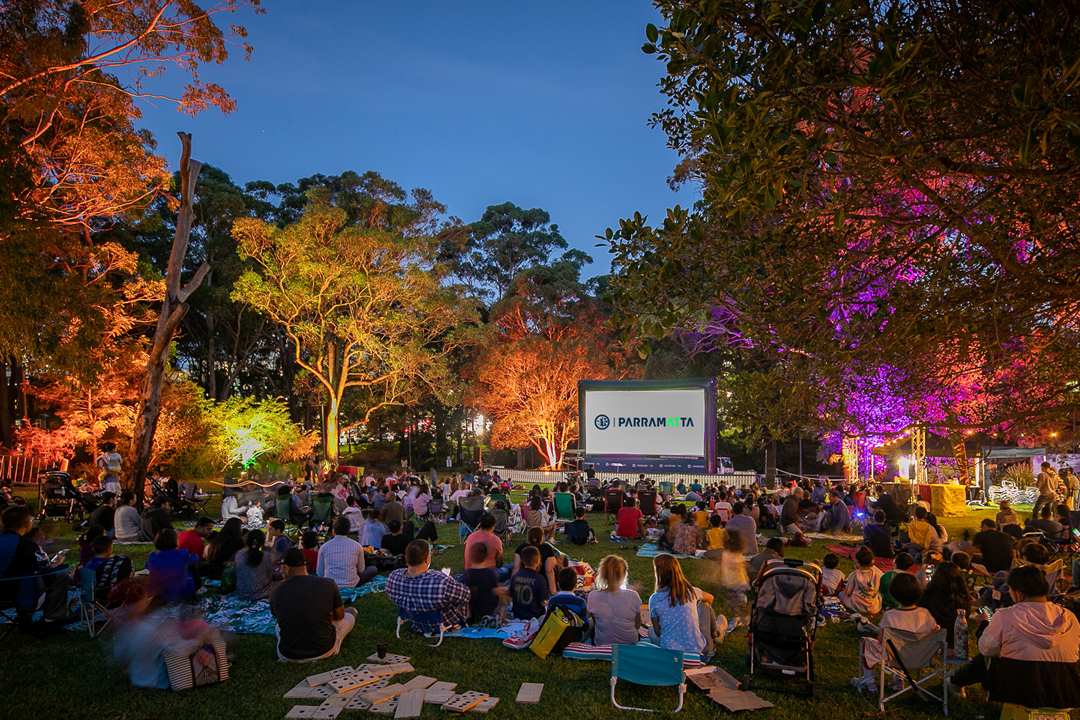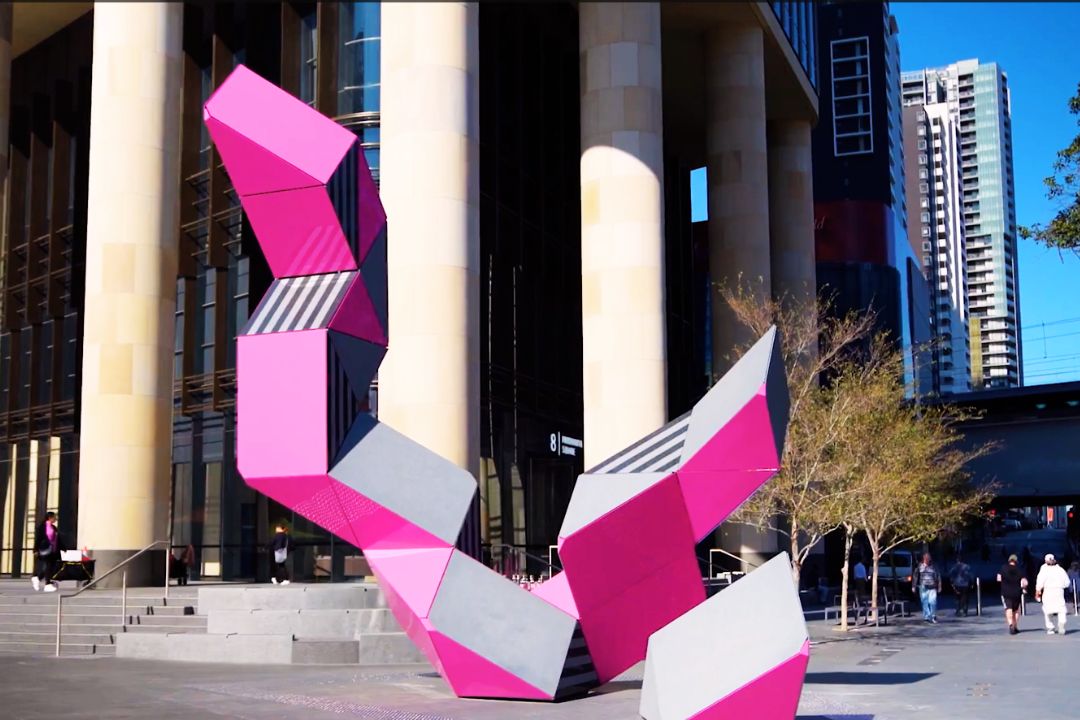Phase 1 tree species
Spotted Gum
(Back to top)Botanic name
Corymbia maculata
Typical height
18-25 metres
Typical width
10-13 metres
Leaf
Large glossy dark green
Bark
Mottled, blue-grey, cream, pink and brown
Flowers
White
Fruit pod
Pear-shaped woody pod
This majestic drought-resistant native tree is beautiful year-round.
Stunning when planted as a boulevard, the tree’s bark varies in colour from mottled blue-grey, to cream, pink and brown.
Its patterned trunk is topped by a cascade of glossy tear-drop-shaped dark-green leaves, and from winter to spring its white flowers are known to be an important source of pollen for native stingless bee honey production.
This tall elegant tree grows a large canopy that provides filtered shade.
Magnolia ‘Little Gem’
(Back to top)Botanic name
Magnolia grandiflora ‘Little Gem’
Typical height
4-6 metres
Typical width
3 metres
Leaf
Glossy dark-green wavy edged leaves with a soft, velvety brown underside
Bark
Smooth
Flowers
Creamy white, fragrant
Fruit pod
Small rose coloured
This lush-looking evergreen tree grows a classic oval-shaped canopy and is well known for its large and fragrant bowl-shaped creamy white flowers.
Flowering from an early age, usually from summer to autumn, this highly-decorative tree has glossy deep green leaves with a furry brown underside.
This hardy variety works beautifully as a street tree and is spectacular when planted in a row.
The Little Gem’s compact form and hardy nature is well suited to streets with overhead power lines and narrow nature strips providing good sized trees and shade in confined spaces.
Pink/Red Flowering Yellow Gum
(Back to top)Botanic name
Eucalyptus leucoxylon ‘Rosea’
Typical height
12-15 metres
Typical width
7 metres
Leaf
Long narrow grey/green
Bark
Mottled silver and cream, sheds in flakes
Flowers
Red flowers appear in clusters of three attracting a variety of birdlife
Fruit pod
Cup shaped woody pod
This upright broad canopied evergreen Eucalypt is striking year-round with a silvery mottled cream trunk, grey/green leaves and sprays of pink/red flowers from Autumn to Spring.
This tree grows moderately fast, and once established is tolerant of extended dry conditions.
This tall elegant tree provides generous shade and is well-suited to creating inviting streetscapes.
Smooth-leaved Quandong
(Back to top)Botanic name
Elaeocarpus eumundi
Typical height
10-12 metres
Typical width
3-5 metres
Leaf
Glossy dark green, new growth is orange/ bronze
Bark
Grey in colour with corky bumpy irregularities
Flowers
Cream
Fruit pod
Small dark blue berries
This native evergreen grows in a narrow upright shape with abundant glossy dark green leaves forming a dense canopy.
Providing a vibrant contrast, new leaf growth is a golden orange or deep bronze in colour. In summer, fragrant cream-coloured flowers give way to egg-shaped dark blue berries.
This fast-growing elegant tree is quite narrow relative to its height making it well suited to constrained streetscapes with limited space.
Crepe Myrtle
(Back to top)Botanic name
Lagerstroemia indica cv
Typical height
7-10 metres
Typical width
4-7 metres
Leaf
Green/dark green
Autumn folliage
Yellow/orange
Bark
Smooth beige, streaked with red/brown
Flowers
Pale mauve, pink or white
Fruit pod
Clusters of small peas
This beautiful deciduous tree grows at a moderate to fast rate and develops a spreading round-shaped canopy.
Branches have attractive small crepe paper-like leaves that turn orange in Autumn and produce extensive frilly or ruffled flowers from December through to March.
This compact hardy tree is well suited to streets with overhead power lines and narrow nature strips, they also do well in hot, dry climates.
The tree has a very attractive, smooth, beige coloured bark, often streaked with red or brown and is known for their striking floral displays.
Crepe Myrtles create dramatic avenues of colour that transform streets during the summer period.
Brush Box
(Back to top)Botanic name
Lophostemon confertus
Typical height
15-20 metres
Typical width
8-12 metres
Leaf
Deep green, broad oval shaped
Bark
Changing in colour throughout the seasons from pink/brown to cream/green
Flowers
White with fluffy lime/yellow stamens
Fruit pod
Small woody peas
This fast-growing and drought-tolerant evergreen native tree grows into a dense oval shape.
Its trunk has rough bark at the base which changes with height becoming smooth and a lovely soft pink colour.
In summer, the tree trunk peels, revealing new cream-coloured bark with a green tinge.
Branches have attractive long (up to 15cm) oval-shaped deep green leaves. Throughout spring and summer, the tree bursts into flower with fragrant stems of five-petalled star-shaped flowers.
This elegant tree is well suited to streetscape environments in Parramatta.
It is very hardy and provides deep shade underneath its spreading canopy, helping to cool our streets during the hot summer months.



